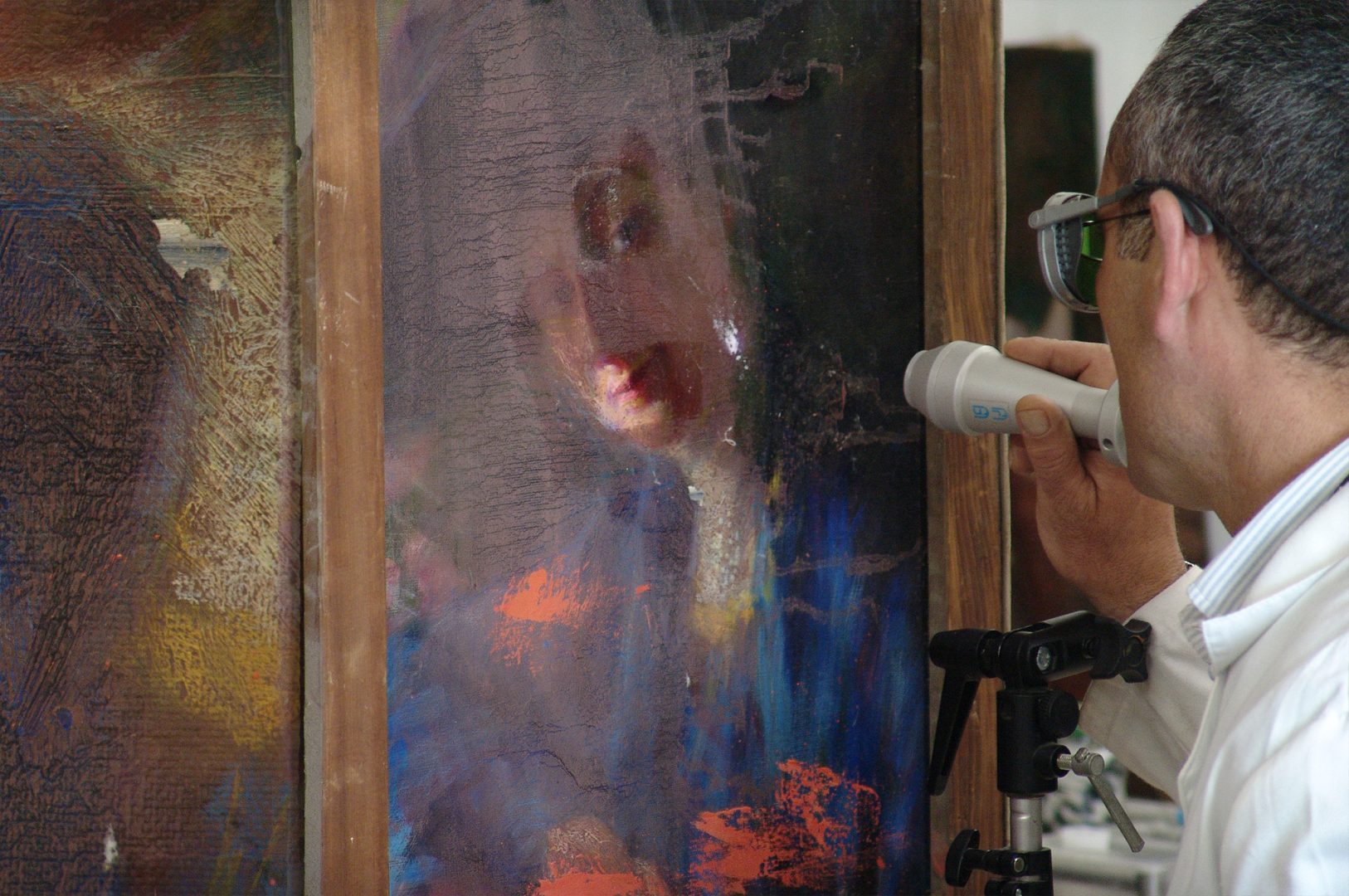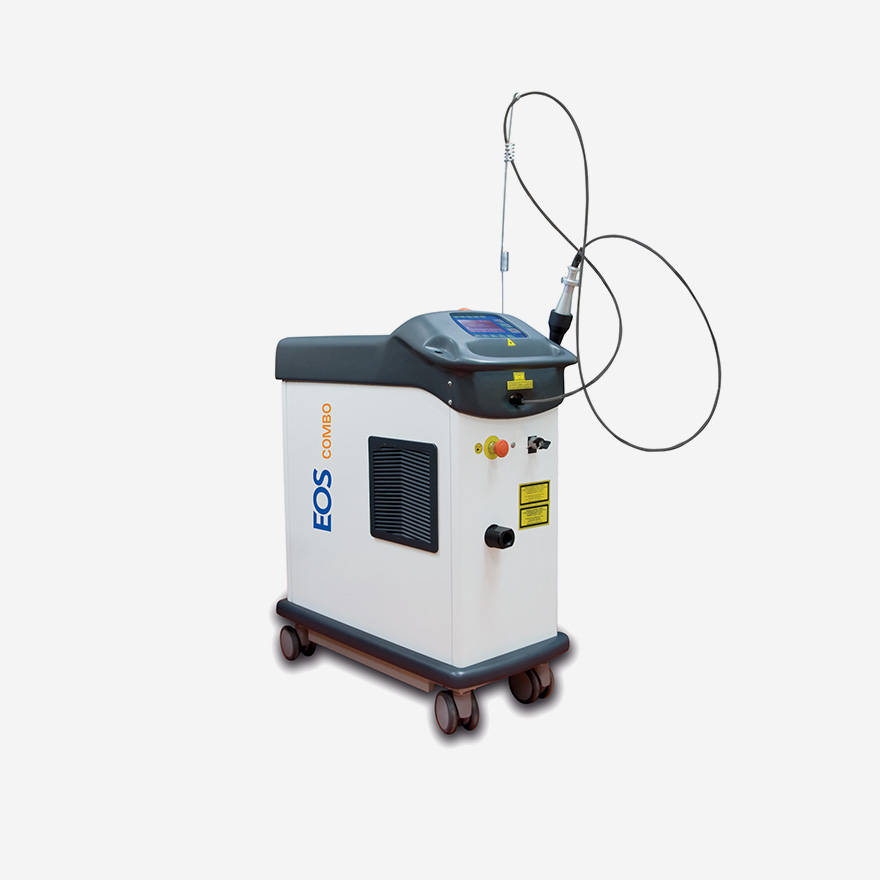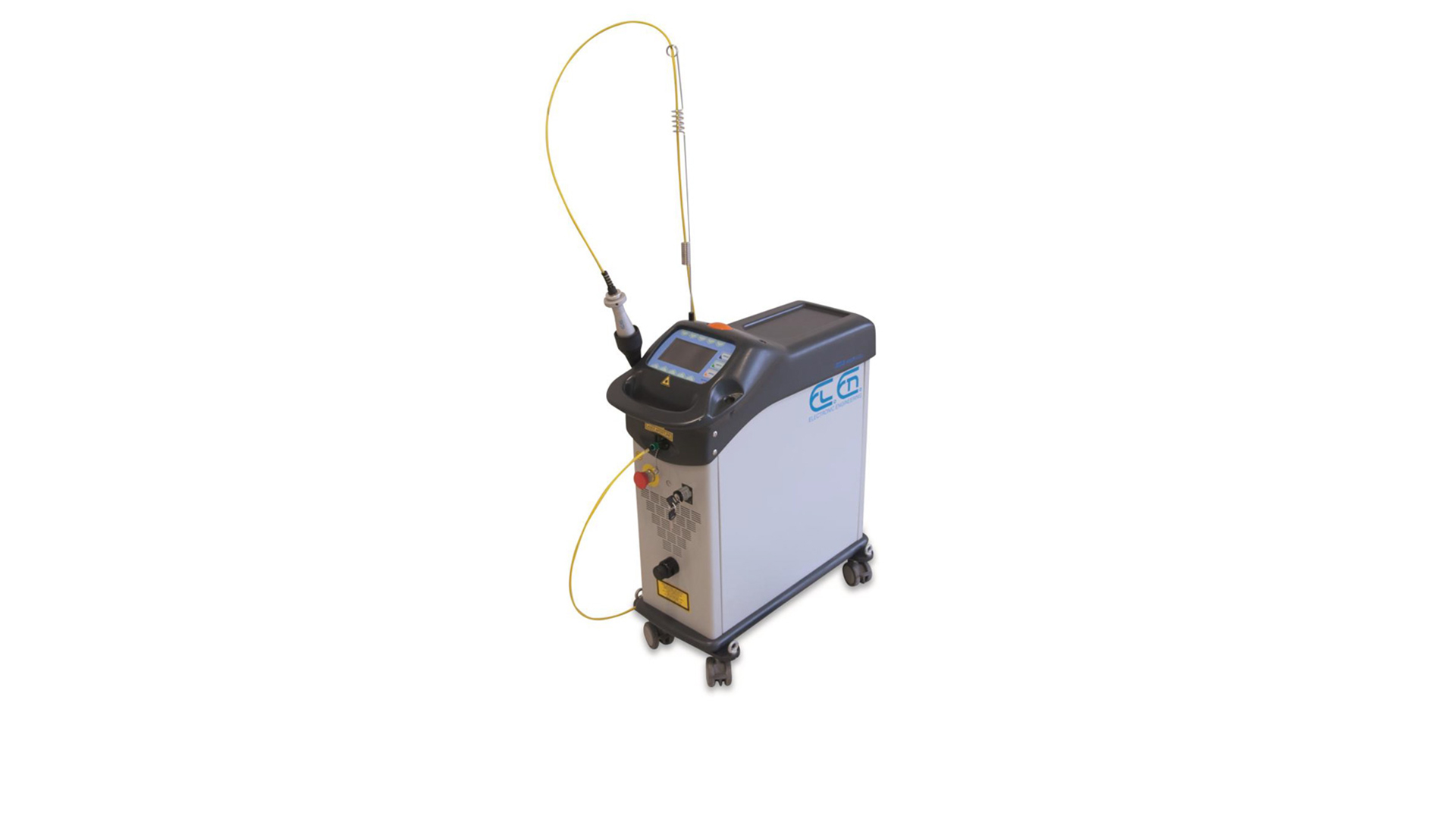
REMOVAL OF REPAINTINGS FROM AN OIL PAINTING BY G. BALLA
THE WORK
On the back of an oil painting by the futurist painter Giacomo Balla, depicting a flower arrangement, a female portrait signed A. Nathan and dated 1910 was found. In all probability the painting was made in Giacomo’s study by Annie Nathan, a student of the painter and daughter of the then mayor of Rome. The painting was extensively covered with thick brushstrokes of color, applied without any artistic intent. Their distribution and variety suggested rather that the canvas had been exploited to clean the brushes during the execution of another painting.
THE PROBLEMS OF RESTORATION
The removal of the repaintings with the use of solvents underwent considerable difficulties, above all because both the original and overlapped layers had been applied in a binder of lipidic nature. From solubility tests it emerged that solvent-based cleaning was hardly practicable and excessively invasive, so as to dissolve the brushstrokes and compromise the structural integrity of the painting. In the search for alternative methods, laser ablation looked very promising. For experimentation and subsequent intervention the restorer turned to the research group led by Dr. Salvatore Siano of the Institute of Applied Physics “N. Carrara” of the CNR of Florence, which for years has been developing advanced laser systems and methodologies for conservation and restoration of artifacts of historical and artistic interest.
THE LASER
Experiments and methodological advances carried out with Nd: YAG laser at 1064 nm and hundreds of nanosecond pulse duration (Long-Q-Switching regime, LQS) have extended the application perspective to extremely complex pictorial stratigraphy. Treatment with moderate fluences of 0.5-0.7 J / cm2 in the absence of solvents has allowed the removal of the various undesired colors without causing micromorphological, chemical or chromatic alterations in the original pictorial layer. Furthermore, the weakening of the adhesion forces at the interface between the pictorial layer and repainted following ongoing degradation mechanisms, has favored, in this case, to effectively exploit the ablative dynamics typical of the LQS regime. The fiber optic delivery of the laser beam, the handpiece with variable focus and the use of attenuation filters, supplied in the EOS 1000 LQS and EOS COMBO systems, have finally provided a high control and precision during the treatment.
Committenza: privata
Restauratore: Alessandro Pavia (Pavia Restauro S.r.l, Roma)
– S. Siano et alii, Overpaint removal from easel paintings using a LQS Nd:YAGlaser: The first validation study, in Proceedings of the LACONA 10 Conference, Sharjah, U.A.E., 9-13 June 2014, Studies in Conservation, Volume 60, August 2015 – Issue sup1: Issue S1 pp 49-57.
– D. Ciofini et alii, Removal of Overpaintings from Easel Paintings Using LQS Nd: YAG Laser, in Applied Physics A, 2014 117, pp. 341–6.
– D. Ciofini, Removal of varnish and overpaint layers from easel paintings using pulsed Nd: YAG lasers, PhD Thesis, University of Florence (Italy), 2015.

